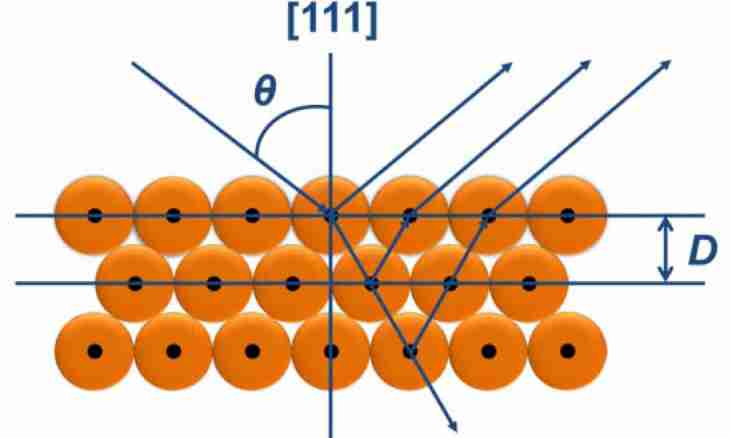Passing through a diffraction lattice the ray of light deviates the direction under several different corners. As a result on other side of a lattice the picture of distribution of brightness in which bright sites alternate with dark turns out. All this picture is called a diffraction range, and the number of bright sites in it defines a range order.
Instruction
1. In calculations you proceed from a formula which connects among themselves light hade (α) on a diffraction lattice, length of its wave (λ), the period of a lattice (d), the angle of diffraction (φ) and an order of a range (k). In this formula the work of the period of a lattice on a difference between sine of angles of diffraction and falling is equated to the work of an order of a range on the wavelength of monochromatic light: d * (sin(φ)-sin(α)) = k*λ.
2. Express a range order from the formula given in the first step. As a result at you equality in which left part there will be a required size has to turn out, and in right there will be a relation of the work of the period of a lattice on the difference of sine of two known corners to light wavelength: k = d * (sin(φ)-sin (α))/λ.
3. As the lattice period, wavelength and a hade in the received formula are constants, the order of a range depends only on the angle of diffraction. In a formula it is expressed through a sine and costs in formula numerator. From this follows that the more the sine of this corner, the is higher a range order. The maximum value which can accept a sine is equal to unit therefore just replace in a formula sin(φ) with an edinichka: k = d * (1-sin (α))/λ. It is also a final formula of calculation of the maximum value of an order of a diffraction range.
4. Substitute numerical sizes from statements of the problem and calculate concrete value of required characteristic of a diffraction range. In initial conditions it can be told that light falling on a diffraction lattice is made of several shades with different lengths of waves. In this case use in calculations that from them which has smaller value. This size costs in formula numerator therefore the greatest value of the period of a range will be received at the smallest value of wavelength.

